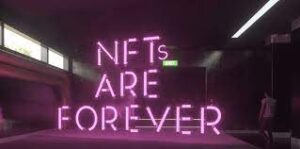
In recent times, non-fungible tokens (NFTs) have undoubtedly made their mark, especially in 2021 when the digital collectible arena exploded in sectors like art, entertainment, music, and sports. Enhanced by endorsements from luminaries such as Logan Paul, Justin Bieber, and Serena Williams, NFTs transformed from a niche to a phenomenon. A fresh wave of enthusiasts transitioned from traditional collectibles like baseball cards to digital novelties, exemplified by multi-million dollar Bored Apes acquisitions.
By January 2022, the NFT momentum seemed unstoppable with an impressive trading volume of US$5.8 billion. However, fast forward a few months, and the crypto realm experienced turbulence. Influenced by events like Terra USD and Luna’s downfall, Bitcoin’s price plummet, and FTX’s meltdown, the NFT market experienced a significant contraction. By August, trading volumes had reduced dramatically to US$395 million, casting shadows over the future of this vibrant industry.
Yet, it’s essential to remain optimistic. While the hype around picture-for-profile NFTs may have dimmed, the broader value and potential applications of NFTs have only begun to surface. NFTs are now proving their worth by tokenizing real-world assets and crafting unique experiences for their holders.
A prime example of NFTs’ evolving potential is the European Commission’s Strategy for Sustainable and Circular Textiles. This plan introduces “Digital Product Passports” which aren’t traditional NFTs, but they hint at the direction the digital landscape is taking. They’ll offer information about products’ environmental sustainability, fostering transparency and promoting greener choices.
Simultaneously, many mainstream and luxury brands are harnessing NFTs to innovate their consumer engagement strategies. Companies like ASICS are spearheading loyalty programs, tapping into the power of blockchain and NFTs. Giants like Nike and Doritos are also exploring the Web3 and NFT space, indicating a shift from mere speculation to genuine utility.
To sum it up, while the flashy side of NFTs, the picture-for-profile tokens, might not dominate the headlines as before, the underlying technology’s potential is unfolding. As brands innovate with loyalty schemes, exclusive digital content, and even avenues for personal digital identity and data ownership, it’s clear that NFTs are evolving. They could very well be the gateway for a broader audience into the Web3 ecosystem, heralding a future not just of novelty, but of true utility.


